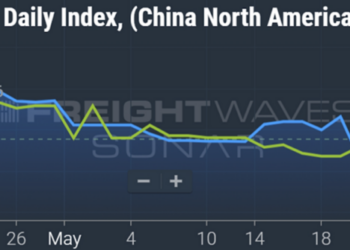Future of Supply Chain is right around the corner in Atlanta. Registration is still open. Last week I was told it was the final week for the discount codes, and this morning in a jaw-dropping surprise to all of us, the exclusive Check Call discount code was extended to the end of this week. Friday is the last day to buy tickets using the promo code CheckCallFSC24. Get that sweet sweet discount as long as you can.
This Saturday marks the official start of hurricane season. The majority of hurricanes occur during August and September, with 40% of the year’s hurricanes occurring in September. Preparations earlier in the year make all the difference.
This year is anticipated to be a particularly rough season as the National Oceanic and Atmospheric Association has predicted an 85% chance for above-normal hurricane activity in the Atlantic. Specifically NOAA predicts “a range of 17 to 25 total named storms (winds of 39 mph or higher). Of those, 8 to 13 are forecast to become hurricanes (winds of 74 mph or higher), including 4 to 7 major hurricanes (category 3, 4 or 5; with winds of 111 mph or higher). Forecasters have a 70% confidence in these ranges.”
The Southeast has always taken the brunt of the storms, which has negatively impacted the ports in the region. As a result, the Texas ports have said they are getting ready should hurricane season prove to be as problematic as it is expected to be.
As for shippers that have distribution facilities, manufacturing, etc. in the prime spots for potential hurricane landfall, it might not be the worst idea to come up with a contingency plan for when the bulk of hurricane season hits so there is minimal disruption to supply chains.
Market Check. Outbound tender rejections in Salt Lake City have begun to rise after plummeting to below 1% earlier in the month. Current rejections are at 1.59%, a mere 43-basis-point increase week over week (w/w). On the other side, outbound tender volumes have risen 6.9% w/w, keeping up with rising outbound tender rejections thus not negatively impacting capacity. Shippers and brokers can continue to expect high contract carrier compliance as rejection rates stay below 2%.
Who’s with whom? The Port of Eagle Pass, Texas, is the fastest-growing border crossing in the U.S. Eagle Pass has beaten out other airports and border crossings for the title. Per an article by FreightWaves’ Noi Mahoney, “The Port of Eagle Pass consists of a rail and vehicle bridge connecting it to Piedras Negras, Mexico. Eagle Pass is a city of about 28,000, according to the 2020 U.S. Census. It is located about 140 miles southwest of San Antonio.”
Despite its best efforts, Eagle Pass hasn’t overthrown the Port of Laredo, Texas, which is the No. 1 U.S. port in volume of trade. But Laredo has seen only 2% year-over-year growth compared to Eagle Pass’ 22%.
“The main reason that I’ve seen the growth in Eagle Pass in the past two years, specifically since September 2021, is related to rail,” said Ben Escarcega, director of contract logistics and transportation at Yusen Logistics. “When Canadian Pacific, Kansas City Southern and Kansas City Southern de Mexico merged, that made a significant impact in the market,” Escarcega said. “Then Union Pacific aligned with Ferromex, which I consider to be the biggest reason for the growth of the border region here in Eagle Pass.”
The more you know
Moody’s, Fitch downgrade Forward Air debt; stock decline now above 90%
Former FedEx Ground contractor files for bankruptcy liquidation
For the first time in years, C.H. Robinson’s debt rating is downgraded by S&P Global
Border officers in Texas seize $5.4M worth of meth in papaya shipment
Midwest Express, Sterling building national wholesale linehaul network
The post Check Call: Here comes hurricane season appeared first on FreightWaves.













